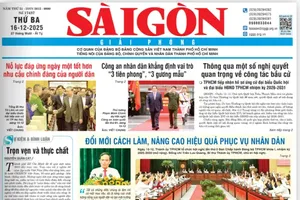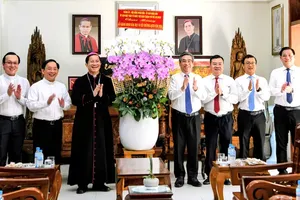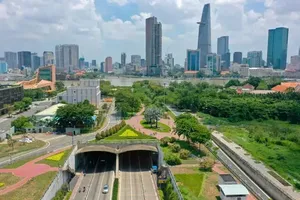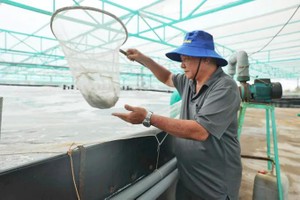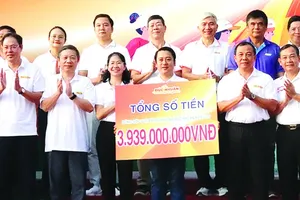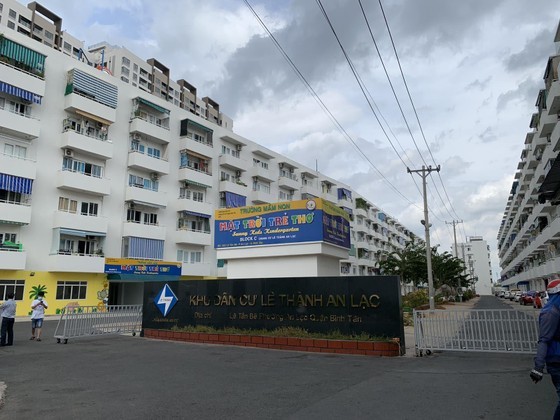 |
A social housing building in HCMC's Binh Tan District |
Conference participants said this at the preliminary conference of the housing development program for the period 2016-2020 and the city's housing development program from 2021 to 2030 held this morning. Factory workers are in dire need of low-cost housing but the supply of this kind of apartment only meets 20 percent of migrant workers' and low-income earners’ needs.
Deputy Director of Ho Chi Minh City's Department of Construction Huynh Thanh Khiet said that in the period 2016-2020, approximately 19 apartment building projects were completed; accordingly, the floor area of social housing in the city increased by 1.23 million square meters, reaching 69.2 percent of the set target.
According to the Housing Development Plan for the 2016-2020 period, the city strives to have 1.78 million square meters of floor area for social houses.
The floor areas in urban districts increased by 930,936 square meters while it soared by 159,305 square meters in suburban districts. The existing urban area has a slow growth rate and the existing central area has no social housing projects.
Regarding construction investment capital, two projects with 366 apartments were built from the state budget while 16 projects with 13,870 apartments were built by private enterprises and the construction of one affordable housing project with 718 apartments used state capital and enterprise capital.
In addition, in the past time, thousands of accommodations for migrant workers and students have also been built from public and private budgets.
In the first nine months of 2022, the city has completed and put into use a 260-apartments social housing project with a total land area of 0.43 ha. According to the Ho Chi Minh City Housing Development Plan for the 2021-2025 period approved by the municipal People's Committee in Decision No. 4151/QD-UBND dated December 9, 2021, in the remaining period, the southern metropolis will strive to develop 2.467 million square meters floor area for social housing construction.
A representative of the Management Board of EPZs and IZs in Ho Chi Minh City said that in the past time, 16 worker accommodation complexes have been put into use to provide shelters for 21,000 migrant workers, accounting for 15 percent of workers in the IZs and EPZs in the city. Through a survey of 96,000 workers in 212 enterprises, up to 64,000 workers rented accommodation and 54,000 of them have the need for affordable housing.
Meanwhile, Deputy Director of Ho Chi Minh City Bank for Social Policies Nguyen Duc Lenh said that after the program for workers to borrow money to buy and repair houses in Ho Chi Minh City was implemented from 2018 until now, only 310 customers have been granted loans with a total amount of nearly VND150 billion.
Many conference participants pointed out that the culprit of the limited supply of social housing in the past time is complicated project investment procedures. For instance, an investor of a social housing project is exempt from land use levy but still carries out the procedures to determine land use levy and then carries out the procedures for land use levy exemption. Profits from social housing projects are restricted, but the procedure is the same as for commercial housing projects.
The land fund in IZs and EPZs to develop accommodation for workers is almost nonexistent while 20 percent of the land fund for social housing development in commercial housing projects according to regulations has not been effectively exploited in the past time.
Vice Chairman of Ho Chi Minh City People's Committee Bui Xuan Cuong said that the goal of the Housing Development Program for the period 2021 - 2030 is to overcome the limitations in the city's housing development in the past time, to better meet the needs of different classes of people with different levels of income.
According to Vice Chairman Bui Xuan Cuong, Ho Chi Minh City is a special city, a hub of economy, science and technology of the southern key economic region; therefore, in addition to the advantages, the city still faces challenges such as high urbanization rate, rapid population growth, high population density, and unreasonable population distribution.
It is forecasted that the population of HCMC will increase by about 200,000 people per year on average, and about 1 million people in 5 years. Therefore, housing development projects must be accelerated to improve the quality of housing for city inhabitants and to ensure the social security of a large urban area.
The city will continue to carry out administrative reforms and propose to the Central Government how to eliminate existing shortcomings to attract financial resources for housing development in general and affordable housing for low-income workers in the coming time.


